I have often heard that when you write, you should write what you know, because personal experiences create the best stories. So when I was presented with the prompt to write a flash fiction and found myself struggling for inspiration, I wrote exactly that. My story is the plainest example of an artist, someone of creative occupation, searching for some sort of muse and finding it in an unexpected form.
So I had found my story; fantastic! All I had to do create my character to live it, then fill in what gaps were left. Just one problem, creating a character. Personally, I find characters to be the hardest part of any work I write. Not only do I struggle with characters, but this narrative is one that is so close to me, it felt strange creating a new life to go through it. Who could possibly express this experience in the direct and poignant way I intend? It now seems obvious. Everyone has experienced frustration in one way or another. Whether in a creative pursuit or otherwise, we each feel the struggle and emotion behind any endeavor we are dedicated to. What better way to connect my reader to my story than to place them in the middle of it?
Reification
You stand at an easel, strategically placed in front of the only window in the slate grey room you occupy, your attention fixed on the canvas in front of you.
You stare.
And your eyes begin to cross.
Suddenly you can’t see. Your eyes begin to adjust as the moon shines in through the window. Each and every light that once shone in the room has been extinguished. Trying to stay calm, you breathe, but soon each breath is as quick as your racing heart.
After you have gathered all the candles you can, and each is lit, you stand at your easel yet again.
Everyone had always described anger and frustration as seeing red, but you are not blinded by this emotion. It sharpens your vision as you’re staring at your art again. Each stroke, every detail, every single mistake screams at you until all you have is your own ineptitude ringing endlessly in your ears.
Not right. Not...good enough.
You’re moving. The canvas is thrown from its perch, right into the stack of unpaid bills waiting on your small desk. Envelopes fly, and one flips, floats, then slides across the floor to your feet.
It’s from the electrical company.
That ringing again.
I cannot create, so I shall only destroy.
Paint is thrown, canvases bent and broken, sculpted clay is shattered. Brushes, tools, paint thinner, and other necessary supplies are all scattered. Crashes echo and are joined by new ones. Paint cans roll across the floor.
You freeze. You should have been more careful. Cans hit your desk, and candles teeter. One topples over the edge.
Flames roar as the paint thinner you were so careless with springs to life. Soon canvas is caught in the roaring beast’s jaws. You have achieved your goal.
You are this destruction.
The glow turns the room bright yellow, then a warm orange as the flames fade to embers.
Shock is the glue that holds you in place.
Then the room is slate grey once again.
Stepping gingerly, you approach the scar that is inlaid on the ground and walls. The candles flicker and settle as you plant your feet in the center of the ashes.
You return to staring.
Paint bleeds through ash and the remains of brushes and canvas hold a soft, steady glow. Slowly, as if afraid to wake a sleeping beast before you, you reach out with a shaking hand to one of the walls.
You press your hand firmly into the ash and paint. You step back as the sun rises on what you have created.
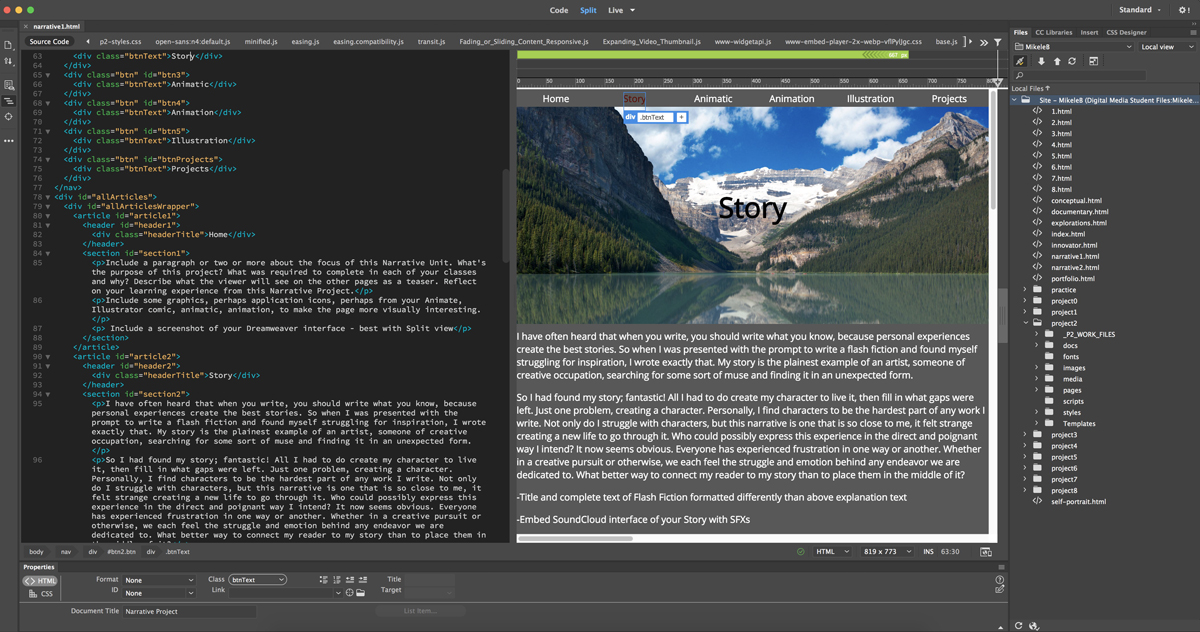 My Narrative webiste in an early stage of production.
My Narrative webiste in an early stage of production.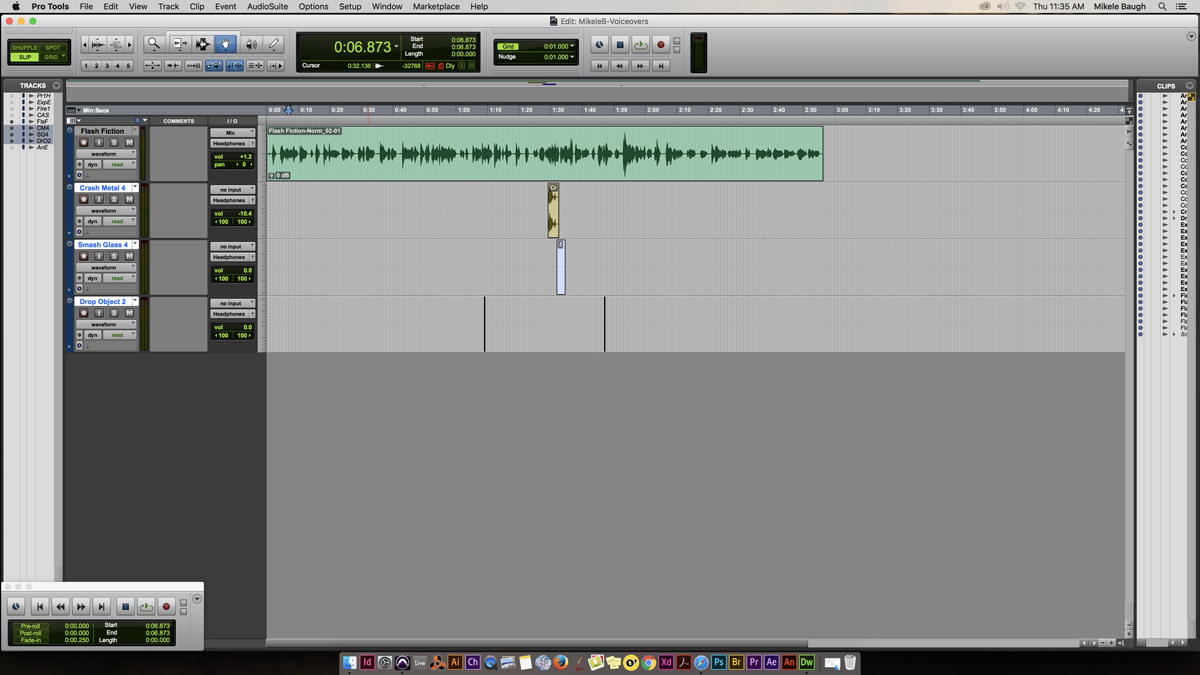 ProTools session used to record Flash Fiction.
ProTools session used to record Flash Fiction.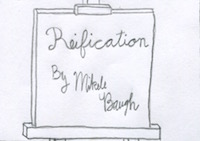
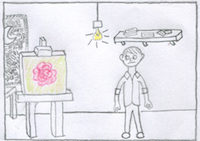
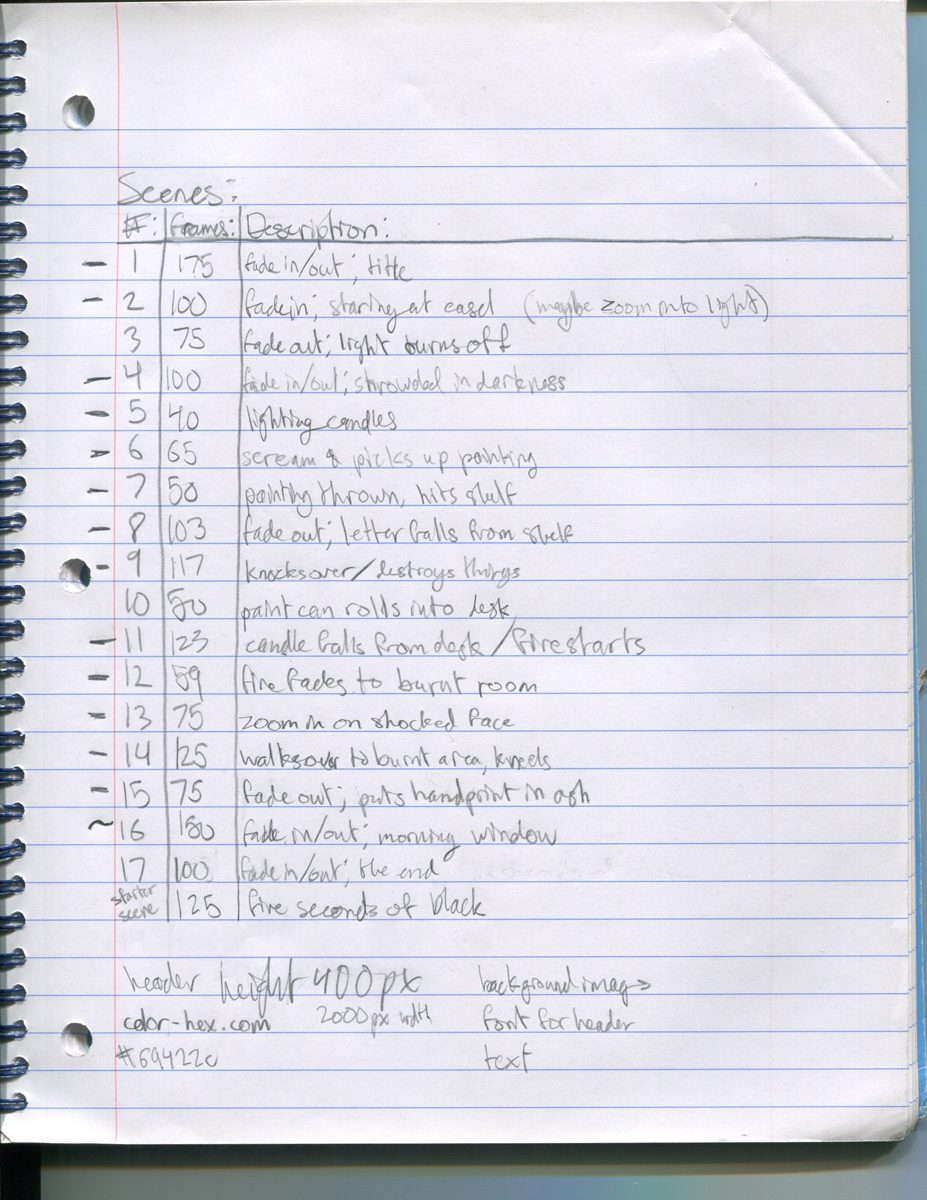 My animatic written out on paper to later aid in the production of my animation. I find it easiest to work once I have a plan written out with pencil and paper.
My animatic written out on paper to later aid in the production of my animation. I find it easiest to work once I have a plan written out with pencil and paper.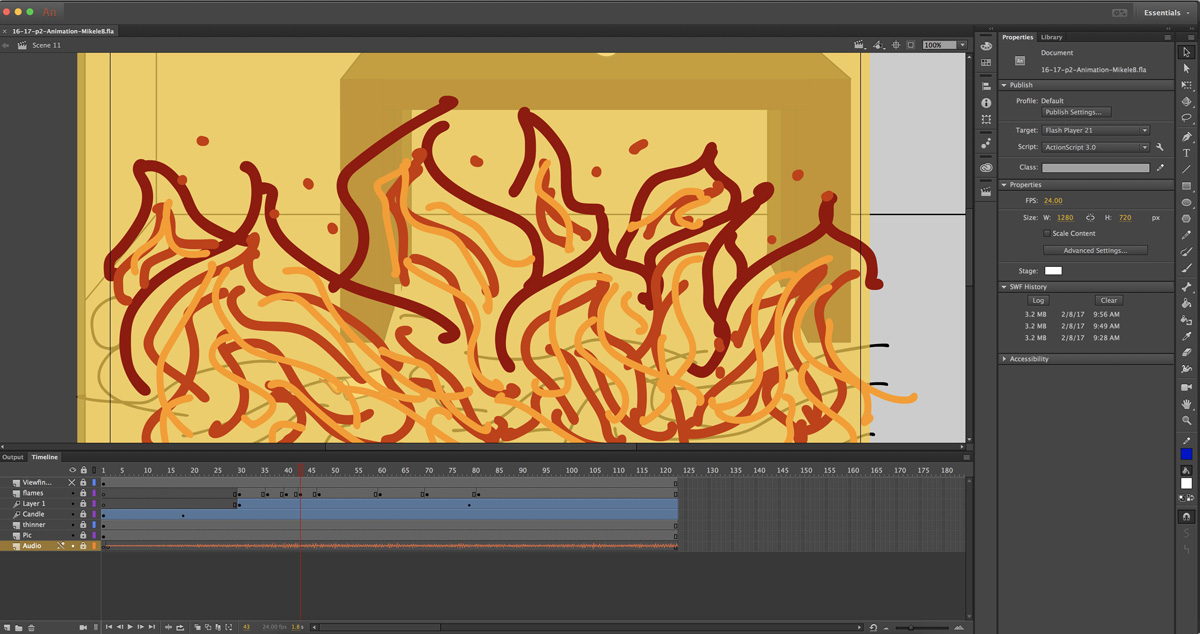 My animation during production.
My animation during production. 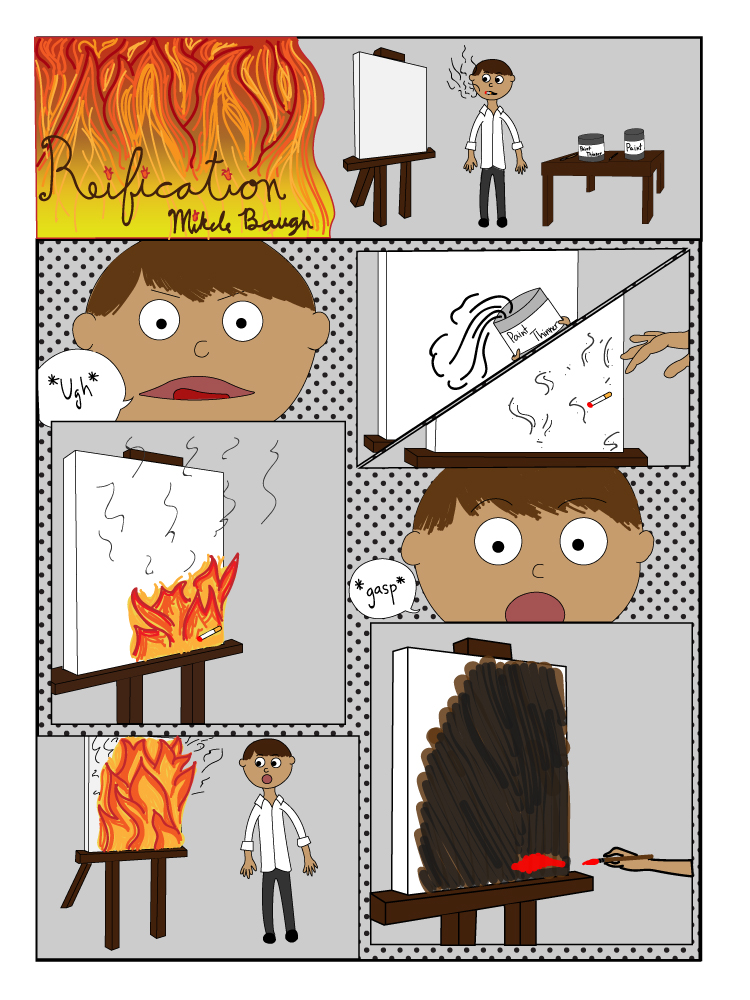
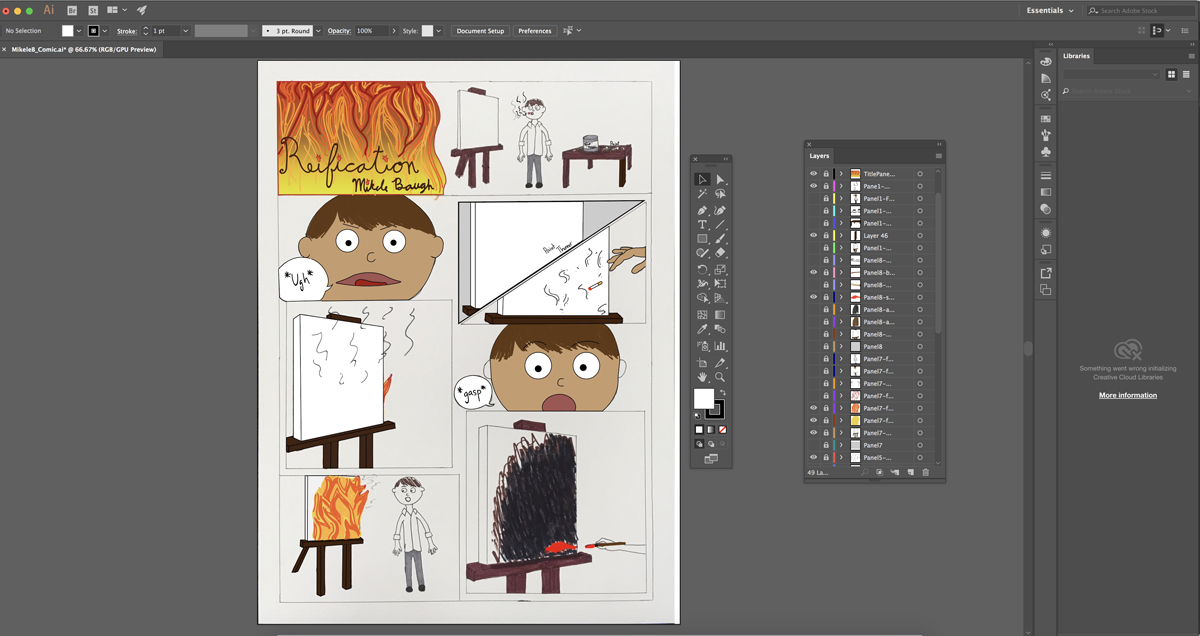 Creating the comic in Illustrator was a long and detailed process.
Creating the comic in Illustrator was a long and detailed process.